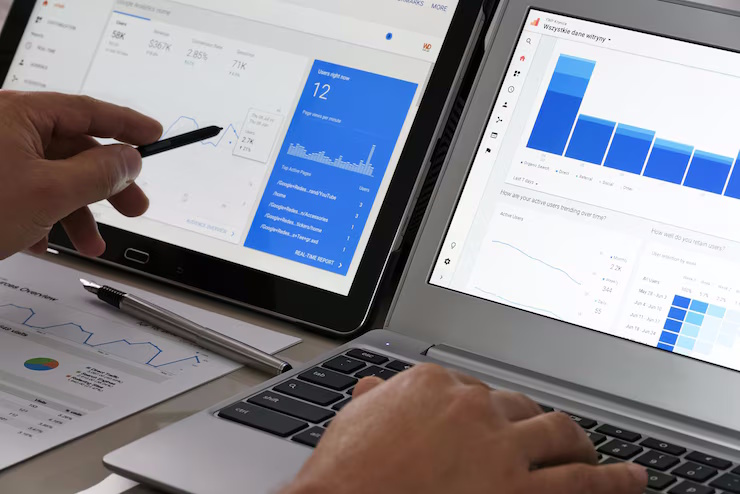Why Web Design Analytics Is a Must-Have for Every Website

When you’re investing in a website, it’s not enough to just make it look great and hope for the best. To really understand how your site is performing and how people are interacting with it, you need reliable data. This is where web design analytics come into play, and Google Analytics is hands down one of the most powerful tools you can use.
Google Analytics gives you direct insight into how visitors are finding your site, what they’re doing when they land on it, and where you might be losing them. In 2025, there is no excuse for running blind. If your website isn’t using Google Analytics, you’re missing out on critical information that could help grow your business.
1. Know Your Audience in Detail
With Google Analytics, you’re not guessing who your users are. You’re seeing exactly where they’re located, what devices they’re using, what time of day they visit your site, and how they found you. This level of detail helps you tailor your website content, calls to action, and marketing efforts based on real behavior, not assumptions.
2. Track Conversions and Goals
Do you know how many people actually fill out your contact form or complete a purchase on your site? With web design analytics, you can set up goals and track conversions. That means you’re not just seeing traffic numbers – you’re seeing which pages are converting and which ones are dropping the ball.
This is essential for improving your funnel and making informed changes to your layout or messaging.
3. Find Out What’s Working and What’s Not
Without data, you might think a certain page is performing well just because it looks good. But web design isn’t about guesses – it’s about results. Google Analytics helps you understand bounce rates, average time on site, and where users are exiting.
This lets you optimize weak spots and double down on content or pages that are keeping people engaged.
4. Improve SEO and Content Strategy
Your content needs to be seen, and Google Analytics shows which pages are bringing in organic search traffic. You’ll learn what keywords are bringing people in, what content they’re spending the most time on, and where they’re coming from.
That’s valuable information for shaping your content strategy and ranking higher in search results.
5. Make Smart Marketing Decisions
Thinking about running a paid ad campaign? Hold up. Before you throw money at ads, use your analytics to figure out where your best traffic is already coming from. Google Analytics helps you identify high performing channels, so you can put your budget behind what’s already working.
6. Measure Success Over Time
Success isn’t built overnight. With web design analytics, you can see how your website is performing over weeks, months, and years. That long term data gives you a realistic view of growth and lets you pivot when necessary.
Tracking user behavior, traffic spikes, and seasonal trends gives you a strategic edge.
Core Takeaway
If you’re not using Google Analytics, you’re flying blind. In the world of web design analytics, having real time insights is the difference between guessing and making smart, informed decisions. Whether you’re trying to boost conversions, optimize content, or just figure out where your audience is coming from, this tool gives you the clarity you need.
Websites aren’t just built to exist – they’re built to perform. And you can’t improve what you don’t measure. So if you’re serious about your online presence, make sure your web designer is setting you up with proper analytics from day one.
Looking to get your website really moving? Get started HERE.